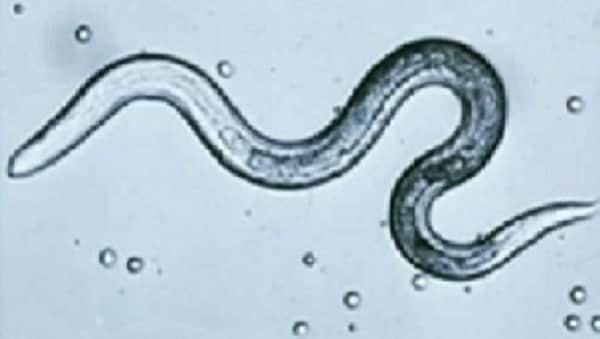Key points
- Toxocariasis is an infection caused by a parasite that spreads to people from animals, usually dogs and cats.
- It's also known as "dog roundworm" or "cat roundworm", after the parasite that causes it.
- Many people who are infected don't have any symptoms. But in some people, toxocariasis causes fevers, coughing, or abdominal pain and may damage the eyes.
- Most cases of toxocariasis can be treated with drugs.

Overview
Toxocariasis is an infection caused by the parasite Toxocara. It spreads to people from animals, usually dogs or cats. A parasite is an organism (a living thing) that lives on or inside another organism. Toxocariasis is more commonly known as roundworm infection.
Types
People who get infected may have two kinds of toxocariasis:
- Ocular toxocariasis, which happens when the parasite gets into the eyes. Ocular toxocariasis can cause eye inflammation, damage to the retina, or vision loss. Typically, only one eye is affected.
- Visceral toxocariasis, which happens when the parasite moves into organs like the liver or central nervous system.
Symptoms
Many people infected with Toxocara parasites never develop symptoms or get sick.
In people who have visceral toxocariasis, the most common symptoms include:
- Fever
- Cough
- Wheezing
- Abdominal (belly) pain
- Enlarged liver
People who have ocular toxocariasis might have:
- Irritation or redness of the eye
- Seeing spots or flashes of light
- Loss of vision
- An abnormally colored pupil
Typically, ocular toxocariasis affects only one eye.
How it spreads
Toxocariasis can spread to people through contact with the feces (poop) of dogs and cats with roundworm. Roundworm eggs are carried in animal feces and can get into peoples' mouths through contaminated dirt or unwashed hands.
In rare cases, people may get infected if they eat undercooked or raw meat like lamb or rabbit. But toxocariasis doesn't spread person-to-person like a cold or flu.
Once inside the body, the eggs hatch and the parasites spread. Many people who are infected don't get sick, while others have only mild symptoms. Severe cases are more likely to be in young children who have been playing in or eating contaminated dirt.
Toxocariasis Lifecycle
Prevention
- Have a veterinarian test and treat your dogs or cats for worms, especially when they are young and if they spend time outdoors. That will make it less likely that people will encounter parasite eggs.
- Wash your hands with soap and water after playing with your pets or other animals, after outdoor activities, and before handling food or eating.
- Pick up your pet's waste every time. Bury it or bag it and dispose of in the trash. Wash your hands after handling pet waste.
- Teach children that it is dangerous to eat dirt or soil.
Diagnosis
Toxocariasis can be hard to diagnose because its symptoms look similar to the symptoms of other infections. If a healthcare provider thinks you might have toxocariasis, they will take a sample of your blood or eye fluid for testing. These tests look for the antibodies your immune system produces when you get infected.
They also may ask if you've been around substances that might have been contaminated with Toxocara eggs, like dirt or pet waste.
